-
 Bitcoin
Bitcoin $84,022.8967
2.34% -
 Ethereum
Ethereum $1,868.2838
2.77% -
 Tether USDt
Tether USDt $0.9999
0.00% -
 XRP
XRP $2.1453
3.05% -
 BNB
BNB $612.3358
2.78% -
 Solana
Solana $127.4412
2.71% -
 USDC
USDC $1.0001
-0.01% -
 Dogecoin
Dogecoin $0.1711
4.68% -
 Cardano
Cardano $0.6759
4.88% -
 TRON
TRON $0.2353
0.73% -
 Toncoin
Toncoin $4.0848
3.73% -
 Chainlink
Chainlink $14.0148
6.01% -
 UNUS SED LEO
UNUS SED LEO $9.3543
2.85% -
 Stellar
Stellar $0.2731
3.21% -
 Avalanche
Avalanche $19.4355
4.38% -
 Sui
Sui $2.3857
7.83% -
 Shiba Inu
Shiba Inu $0.0...01278
5.25% -
 Hedera
Hedera $0.1688
5.17% -
 Polkadot
Polkadot $4.1925
4.20% -
 Litecoin
Litecoin $84.6282
3.00% -
 MANTRA
MANTRA $6.3356
0.81% -
 Bitcoin Cash
Bitcoin Cash $312.8725
4.70% -
 Bitget Token
Bitget Token $4.6137
4.16% -
 Dai
Dai $0.9999
0.00% -
 Ethena USDe
Ethena USDe $0.9998
-0.03% -
 Pi
Pi $0.6993
0.19% -
 Hyperliquid
Hyperliquid $13.5365
7.54% -
 Monero
Monero $217.9467
1.18% -
 Uniswap
Uniswap $6.1376
4.34% -
 Aptos
Aptos $5.3585
3.13%
Technical analysis points of Ethereum K-line charts
Ethereum's K-line charts help traders spot trends, identify support/resistance levels, and use indicators like RSI and MACD for informed trading decisions.
Mar 30, 2025 at 11:35 am

Understanding Ethereum's Price Action Through K-Line Charts
K-line charts, also known as candlestick charts, are a fundamental tool for technical analysis in the cryptocurrency market, including Ethereum (ETH). They visually represent price movements over a specific period, offering insights into trends, support and resistance levels, and potential future price direction. Understanding how to interpret these charts is crucial for informed trading decisions.
Identifying Key Elements of an Ethereum K-line
Each candlestick on an Ethereum K-line chart represents a specific timeframe (e.g., 1-hour, 4-hour, daily). The candlestick body shows the price range between the open and close, while the wicks (shadows) extend to the high and low prices of that period. A green (or white) candlestick indicates a closing price higher than the opening price (bullish), while a red (or black) candlestick shows a closing price lower than the opening price (bearish). The size of the body and the length of the wicks provide additional information about buying and selling pressure.
Spotting Trends Using Ethereum K-line Charts
Identifying trends is a key aspect of technical analysis. An uptrend is characterized by a series of higher highs and higher lows, while a downtrend shows lower highs and lower lows. A sideways trend, or consolidation, occurs when prices fluctuate within a defined range. Identifying the prevailing trend helps traders align their strategies accordingly – buying during uptrends and potentially shorting during downtrends. Recognizing trend reversals is equally important.
Support and Resistance Levels in Ethereum Trading
Support levels represent price points where buying pressure is strong enough to prevent further price declines. Resistance levels are the opposite – price points where selling pressure is strong enough to prevent further price increases. These levels are often identified by horizontal lines drawn across the chart, connecting previous price highs (resistance) and lows (support). Breakouts above resistance or below support can signal significant price movements.
Understanding Candlestick Patterns in Ethereum Charts
Various candlestick patterns can provide insights into potential future price movements. Some common patterns include:
- Hammer: A small body with a long lower wick, suggesting a potential bullish reversal.
- Hanging Man: Similar to a hammer, but appearing at the top of an uptrend, suggesting a potential bearish reversal.
- Engulfing Pattern: A large candlestick completely encompassing the previous candlestick, indicating a potential trend reversal (bullish or bearish depending on the color).
- Doji: A candlestick with nearly equal opening and closing prices, indicating indecision in the market.
Using Moving Averages for Ethereum Price Analysis
Moving averages (MAs) are widely used indicators that smooth out price fluctuations, revealing underlying trends. Commonly used MAs include the simple moving average (SMA) and the exponential moving average (EMA). Traders often use multiple MAs (e.g., 50-day SMA and 200-day SMA) to identify potential buy or sell signals based on crossovers. A "golden cross" occurs when a shorter-term MA crosses above a longer-term MA, often interpreted as a bullish signal. A "death cross" is the opposite, suggesting a bearish outlook.
Relative Strength Index (RSI) and Ethereum Price Momentum
The RSI is a momentum indicator that measures the magnitude of recent price changes to evaluate overbought or oversold conditions. Readings above 70 are generally considered overbought, suggesting a potential price correction, while readings below 30 are considered oversold, potentially indicating a price rebound. However, the RSI should be used in conjunction with other indicators for more accurate signals. It's not a standalone predictor of price direction.
MACD and Ethereum Price Trend Confirmation
The Moving Average Convergence Divergence (MACD) is a trend-following momentum indicator that shows the relationship between two moving averages. A bullish signal is generated when the MACD line crosses above the signal line, while a bearish signal occurs when the MACD line crosses below the signal line. Divergences between the MACD and the price action can also provide valuable insights.
Volume Analysis and its Importance in Ethereum Charts
Volume analysis is crucial for confirming price movements. High volume during a price increase confirms the strength of the uptrend, while high volume during a price decrease confirms the strength of the downtrend. Low volume during price movements often suggests weak momentum and potential reversals. Combining volume analysis with other technical indicators enhances trading accuracy.
Fibonacci Retracements and Ethereum Price Projections
Fibonacci retracements are based on the Fibonacci sequence, a mathematical sequence found in nature. These retracements are used to identify potential support and resistance levels based on previous price swings. Common retracement levels include 23.6%, 38.2%, 50%, 61.8%, and 78.6%. These levels are not guaranteed price points, but they can offer potential areas where price might pause or reverse.
Combining Indicators for Comprehensive Ethereum Analysis
Using a single indicator for trading decisions is generally risky. Combining multiple indicators, such as moving averages, RSI, MACD, and candlestick patterns, provides a more comprehensive picture of the market sentiment and potential price movements. This holistic approach minimizes the risk of false signals and improves the accuracy of trading strategies.
Frequently Asked Questions
Q: What are the limitations of using K-line charts for Ethereum analysis?
A: K-line charts are based on historical price data and do not guarantee future price movements. They are susceptible to manipulation and may not accurately reflect market sentiment in highly volatile conditions. They should be used in conjunction with fundamental analysis and risk management strategies.
Q: How can I improve my K-line chart reading skills?
A: Practice is key. Start by analyzing historical Ethereum charts, focusing on identifying candlestick patterns, support/resistance levels, and trend lines. Use charting software with built-in indicators to enhance your analysis. Consider backtesting your strategies to evaluate their effectiveness.
Q: Are there any resources for learning more about Ethereum K-line chart analysis?
A: Numerous online resources are available, including educational websites, trading platforms, and YouTube channels dedicated to technical analysis. Many books and courses also provide in-depth knowledge of candlestick charting and other technical indicators. Always learn from reputable sources.
Q: Can K-line chart analysis predict the exact price of Ethereum?
A: No, K-line chart analysis cannot predict the exact price of Ethereum or any cryptocurrency. It provides insights into potential price movements based on historical data and technical indicators, but it's not a foolproof method. Market conditions are constantly changing, influenced by various factors beyond the scope of technical analysis.
Disclaimer:info@kdj.com
The information provided is not trading advice. kdj.com does not assume any responsibility for any investments made based on the information provided in this article. Cryptocurrencies are highly volatile and it is highly recommended that you invest with caution after thorough research!
If you believe that the content used on this website infringes your copyright, please contact us immediately (info@kdj.com) and we will delete it promptly.
- South Korea Cracks the Whip on Unregistered Digital Asset Exchanges, Targeting Bans on KuCoin, BitMEX, and Others
- 2025-04-01 20:10:12
- Shytoshi Kusama's Cryptic New Location Hints at Big Changes Coming to the SHIB Ecosystem
- 2025-04-01 20:10:12
- The Best New Meme Coins to Join Now: BTFD Coin, Gigachad, and More
- 2025-04-01 20:05:12
- Russian Darknet Markets Dominate Bitcoin and TRON Drug Sales, TRM Labs Says
- 2025-04-01 20:05:12
- Bitcoin (BTC) Selling Pressure Has Dropped Sharply, Suggesting a Period of Consolidation
- 2025-04-01 20:00:12
- Strategy (MSTR) Acquires 22,048 Bitcoins (BTC) for $1.92 Billion at an Average Price of $86,969 per BTC
- 2025-04-01 20:00:12
Related knowledge
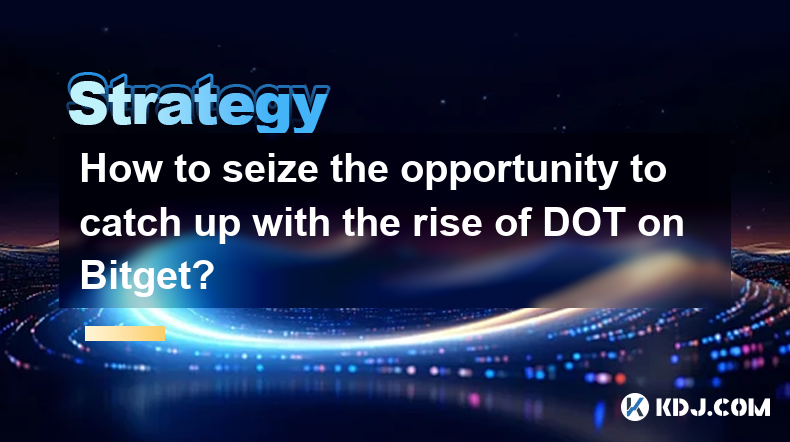
How to seize the opportunity to catch up with the rise of DOT on Bitget?
Mar 31,2025 at 07:29pm
Understanding the DOT/Bitget OpportunityPolkaDot (DOT) is a prominent cryptocurrency known for its innovative cross-chain interoperability solutions. Bitget is a well-established cryptocurrency exchange offering a variety of trading options, including DOT trading pairs. Seizing opportunities within this pairing requires understanding market dynamics, r...
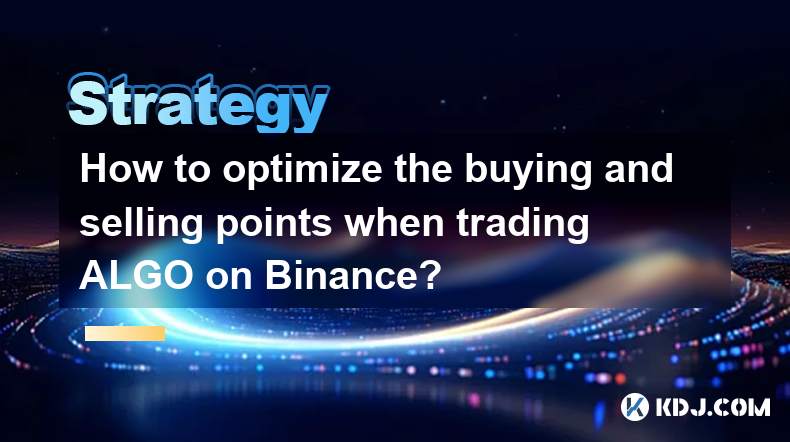
How to optimize the buying and selling points when trading ALGO on Binance?
Mar 31,2025 at 12:28am
Understanding ALGO Price Volatility on BinanceAlgorand (ALGO) price, like most cryptocurrencies, is highly volatile. Successful trading requires understanding these fluctuations and identifying optimal entry and exit points. This involves analyzing market trends, using technical indicators, and managing risk effectively. Ignoring these factors can lead...
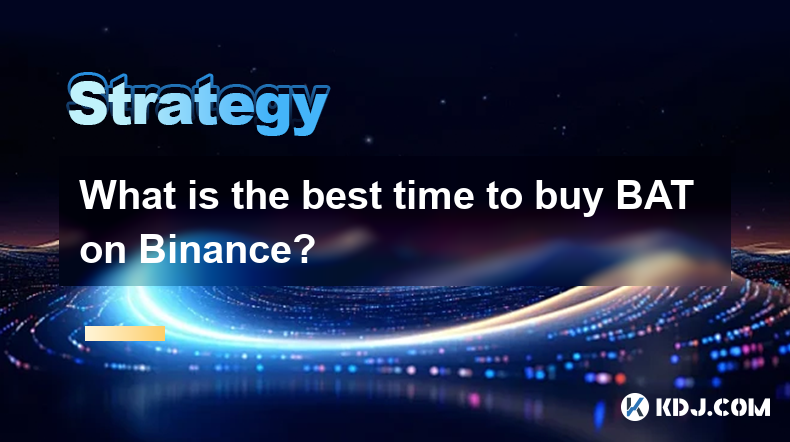
What is the best time to buy BAT on Binance?
Apr 01,2025 at 02:07am
There's no single 'best' time to buy Basic Attention Token (BAT) on Binance, or any cryptocurrency for that matter. The cryptocurrency market is incredibly volatile, influenced by a multitude of factors, making precise prediction impossible. Timing the market perfectly is a fool's errand. Instead, focus on a long-term strategy and consider your persona...
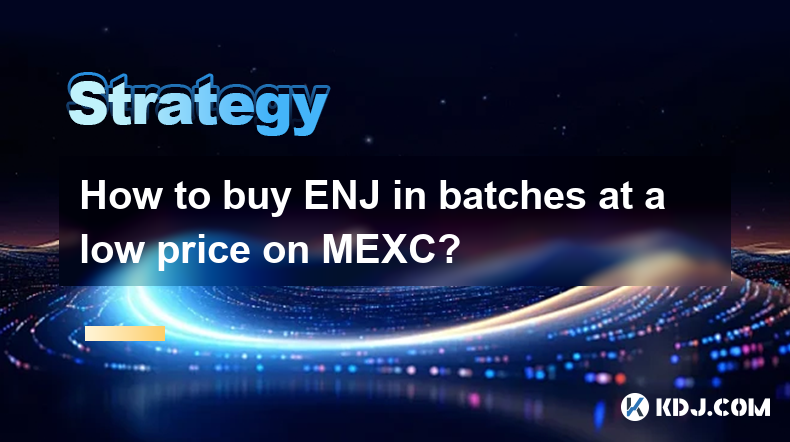
How to buy ENJ in batches at a low price on MEXC?
Mar 30,2025 at 10:28am
Understanding Batch Buying and Price FluctuationsBuying ENJ (Enjin Coin) in batches on MEXC, or any exchange, aims to mitigate the risk of buying high. Cryptocurrency prices are incredibly volatile. Purchasing a large amount at once exposes you to significant losses if the price drops immediately after your purchase. Batch buying spreads out your inves...
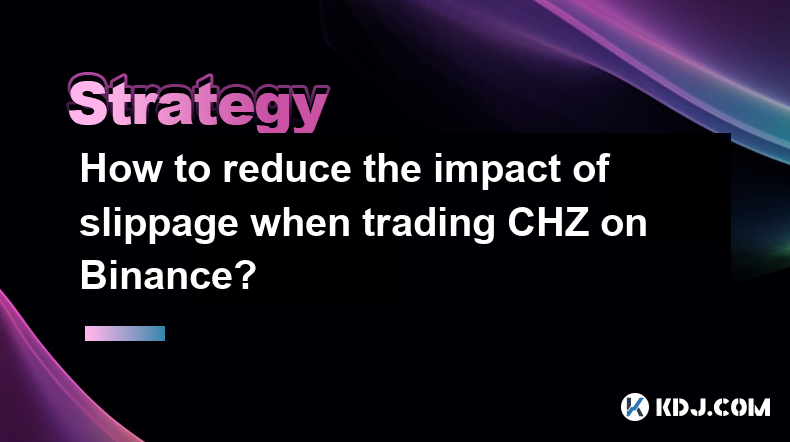
How to reduce the impact of slippage when trading CHZ on Binance?
Apr 01,2025 at 08:00pm
Understanding Slippage in CHZ TradingSlippage refers to the difference between the expected price of a trade and the actual execution price. In the volatile cryptocurrency market, especially with tokens like CHZ (Chiliz), slippage can significantly impact your profits. Several factors contribute to slippage, and understanding them is crucial to mitigat...
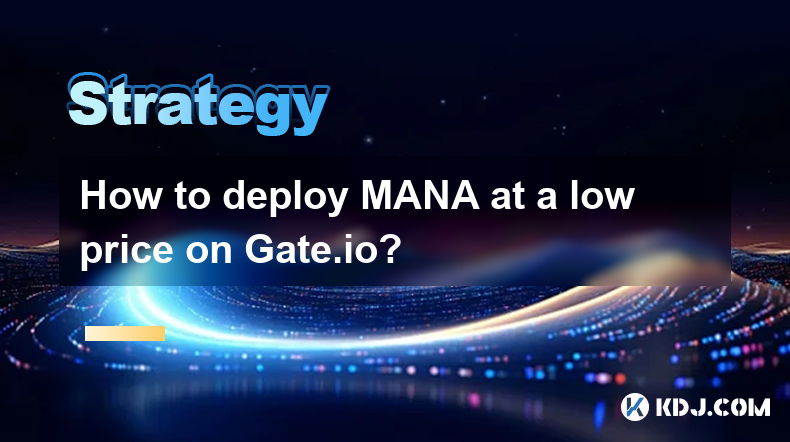
How to deploy MANA at a low price on Gate.io?
Mar 30,2025 at 07:56am
Understanding MANA and Gate.ioDecentraland's native token, MANA, fuels its virtual world platform. Gate.io is a popular cryptocurrency exchange offering a wide range of digital assets, including MANA. Deploying MANA, in this context, refers to purchasing and holding it on the Gate.io exchange. Achieving a low price requires strategic timing and underst...

How to seize the opportunity to catch up with the rise of DOT on Bitget?
Mar 31,2025 at 07:29pm
Understanding the DOT/Bitget OpportunityPolkaDot (DOT) is a prominent cryptocurrency known for its innovative cross-chain interoperability solutions. Bitget is a well-established cryptocurrency exchange offering a variety of trading options, including DOT trading pairs. Seizing opportunities within this pairing requires understanding market dynamics, r...

How to optimize the buying and selling points when trading ALGO on Binance?
Mar 31,2025 at 12:28am
Understanding ALGO Price Volatility on BinanceAlgorand (ALGO) price, like most cryptocurrencies, is highly volatile. Successful trading requires understanding these fluctuations and identifying optimal entry and exit points. This involves analyzing market trends, using technical indicators, and managing risk effectively. Ignoring these factors can lead...

What is the best time to buy BAT on Binance?
Apr 01,2025 at 02:07am
There's no single 'best' time to buy Basic Attention Token (BAT) on Binance, or any cryptocurrency for that matter. The cryptocurrency market is incredibly volatile, influenced by a multitude of factors, making precise prediction impossible. Timing the market perfectly is a fool's errand. Instead, focus on a long-term strategy and consider your persona...

How to buy ENJ in batches at a low price on MEXC?
Mar 30,2025 at 10:28am
Understanding Batch Buying and Price FluctuationsBuying ENJ (Enjin Coin) in batches on MEXC, or any exchange, aims to mitigate the risk of buying high. Cryptocurrency prices are incredibly volatile. Purchasing a large amount at once exposes you to significant losses if the price drops immediately after your purchase. Batch buying spreads out your inves...

How to reduce the impact of slippage when trading CHZ on Binance?
Apr 01,2025 at 08:00pm
Understanding Slippage in CHZ TradingSlippage refers to the difference between the expected price of a trade and the actual execution price. In the volatile cryptocurrency market, especially with tokens like CHZ (Chiliz), slippage can significantly impact your profits. Several factors contribute to slippage, and understanding them is crucial to mitigat...

How to deploy MANA at a low price on Gate.io?
Mar 30,2025 at 07:56am
Understanding MANA and Gate.ioDecentraland's native token, MANA, fuels its virtual world platform. Gate.io is a popular cryptocurrency exchange offering a wide range of digital assets, including MANA. Deploying MANA, in this context, refers to purchasing and holding it on the Gate.io exchange. Achieving a low price requires strategic timing and underst...
See all articles























































































